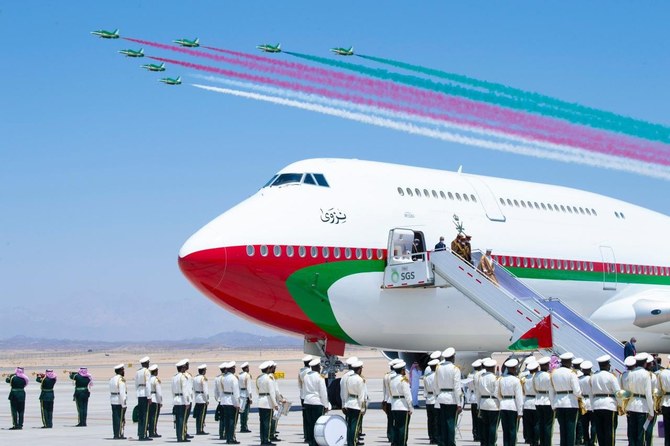RIYADH: Sultan Haitham bin Tariq and King Salman held talks on Sunday in NEOM during the Omani leader's official visit to Saudi Arabia.
Crown Prince Mohammed bin Salman received Sultan Haitham on his arrival at NEOM Bay Airport.
The king welcomed Sultan Haitham and his delegation, while the sultan expressed his happiness to visit the Kingdom and meet King Salman.
The leaders then held an official session of talks during which they reviewed “the historical and well-established fraternal relations” between their countries, and discussed prospects for joint cooperation in various fields.
The talks were held in the presence of Prince Mohammed and attended by Interior Minister Prince Abdul Aziz bin Saud bin Naif and Foreign Minister Prince Faisal bin Farhan.
The Omani Foreign Minister Sayyid Badr bin Hamad Al-Busaidi also attended the meeting.
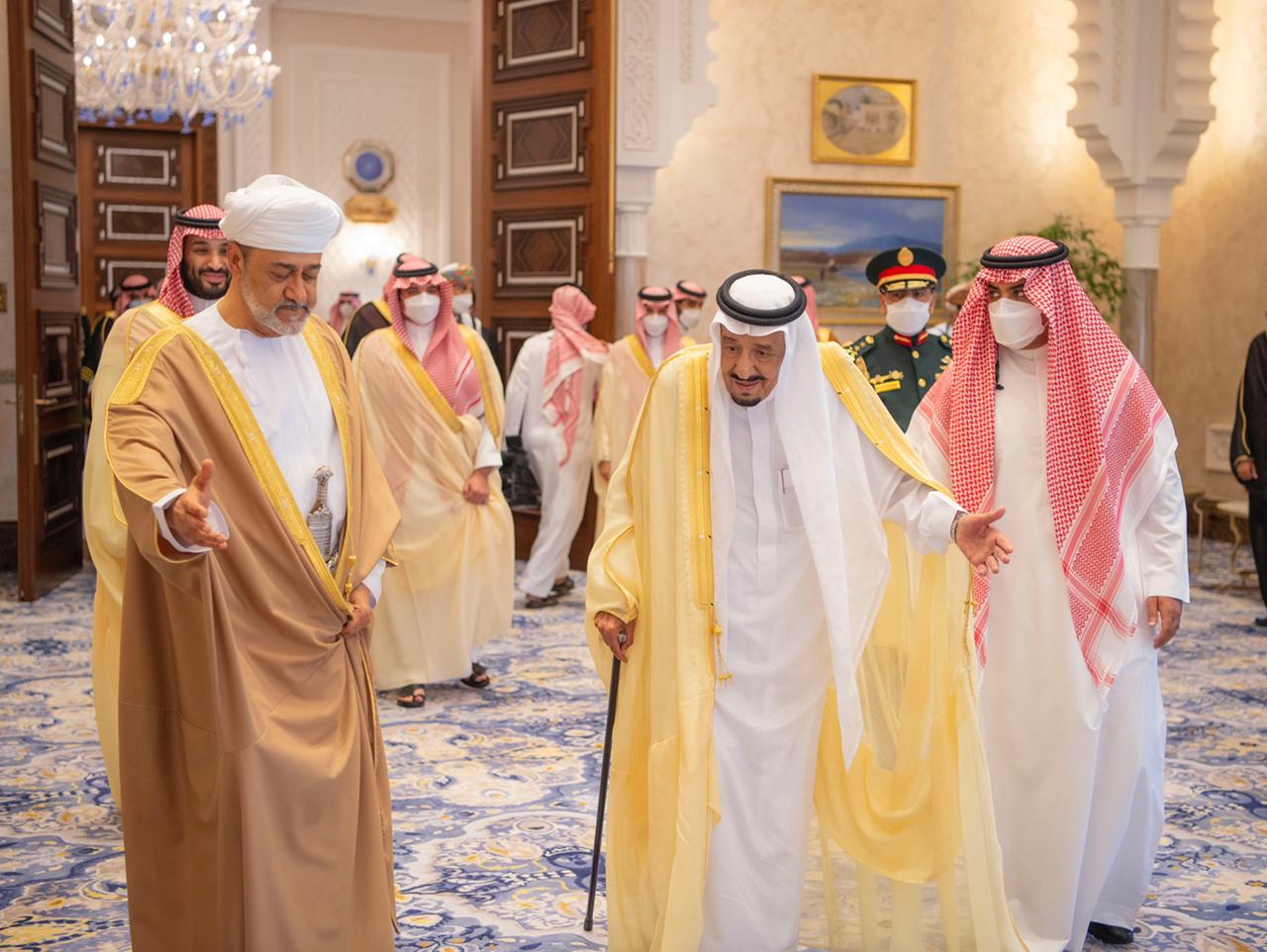
Saudi Arabia's King Salman receives Oman's Sultan Haitham bin Tariq in NEOM on July 11. (SPA)
The king then hosted a luncheon in honor of Sultan Haitham and his delegation.
King Salman awarded Sultan Haitham with the Order of King Abdul Aziz whilst the sultan awarded the king with the Order of Al-Said, the highest order of Oman.
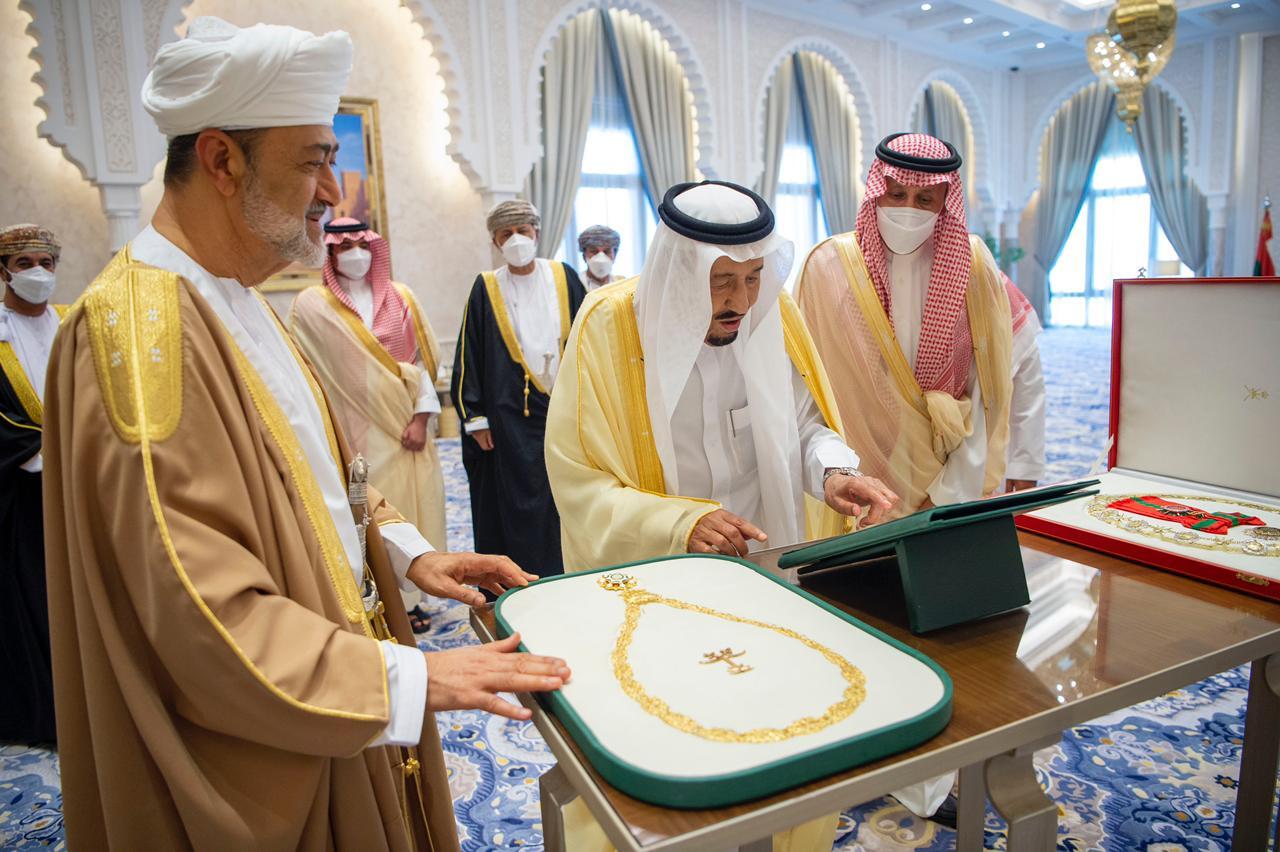
King Salman awarded Sultan Haitham with the Order of King Abdul Aziz whilst the sultan awarded the king with the Order of Al-Said, the highest order of Oman. (SPA)
The king and sultan witnessed the signing of a memorandum of understanding (MoU) on establishing the Saudi-Omani Coordination Council.
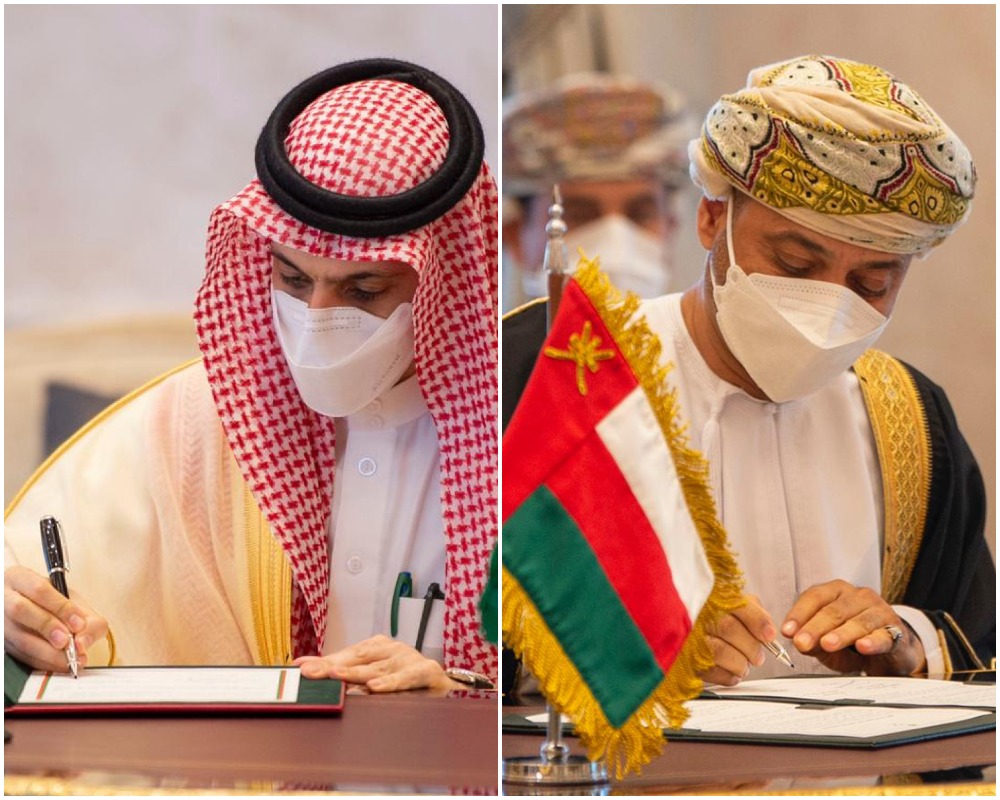
An MoU is signed to establish the Saudi-Omani Coordination Council at the royal palace in NEOM. (SPA)
Immediately after Sultan Haitham disembarked the plane, the Saudi Hawks aerobatic team gave an air show in which the colors of the Omani flag were painted in the sky, and the Saudi artillery fired 21 rounds to welcome his arrival.
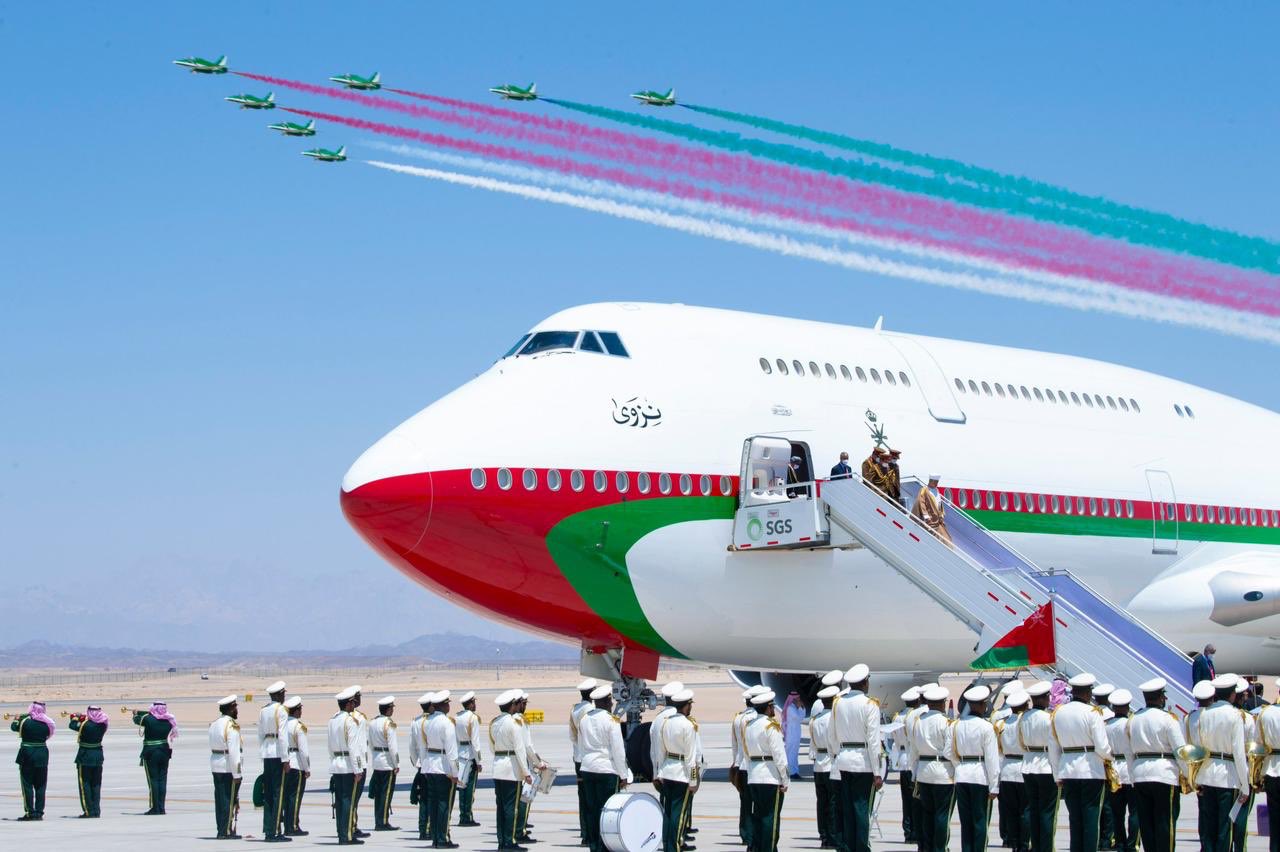
Royal Saudi Air Force planes put on a show to receive the sultan of Oman in NEOM. (SPA)
An official reception ceremony was held where the national anthems of the two countries were played.
The sultan’s visit “to the Kingdom and his meeting with the Custodian of the Two Holy Mosques establishes a new milestone in the historic and deep rooted Saudi-Omani relationship, which will deepen cooperation and create prosperity for both peoples,” said Saudi Deputy Defense Minister Prince Khalid bin Salman.
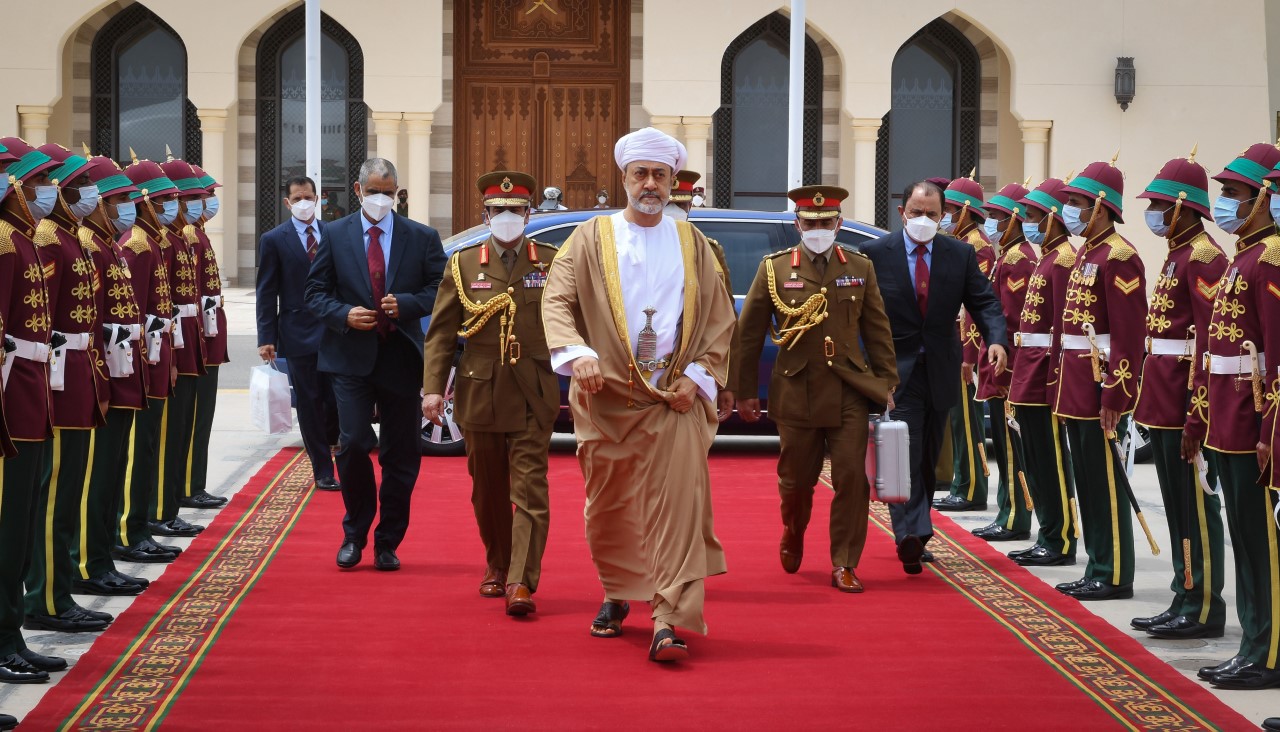
Sultan Haitham is being accompanied by senior ministers and diplomats. (ONA)
The leader of Oman began his journey from the sultanate to Saudi Arabia earlier on Sunday for his two-day visit to the Kingdom at the invitation of King Salman for wide-ranging talks.
“The visit comes within the framework of strengthening the historical and fraternal relations between the leaderships of the two countries,” the Saudi Press Agency (SPA) said. “It also aims to expand the prospects of joint cooperation and ways to develop them in various fields for the interest and steady progress of the peoples of the two countries.”
SPA added that the visit is intended to “strengthen the deep historical bonds” between the two countries, “and to explore new areas of cooperation — particularly in the fields of trade, infrastructure and development.”
Sultan Haitham is being accompanied by senior ministers and diplomats, including Deputy Prime Minister for Defense Affairs Sayyid Shihab bin Tarik Al-Said, Interior Minister Sayyid Hamoud bin Faisal Al-Busaidi.
During his visit, Prince Mohammed bin Salman accompanied Sultan Haitham on a tour of the NEOM Center for Knowledge Enrichment, where they reviewed the latest developments related to the NEOM project and its sectors.
Sultan Haitham was also briefed during the tour on developments of other major projects, including AlUla, Qiddiya, Amaala and the Red Sea.
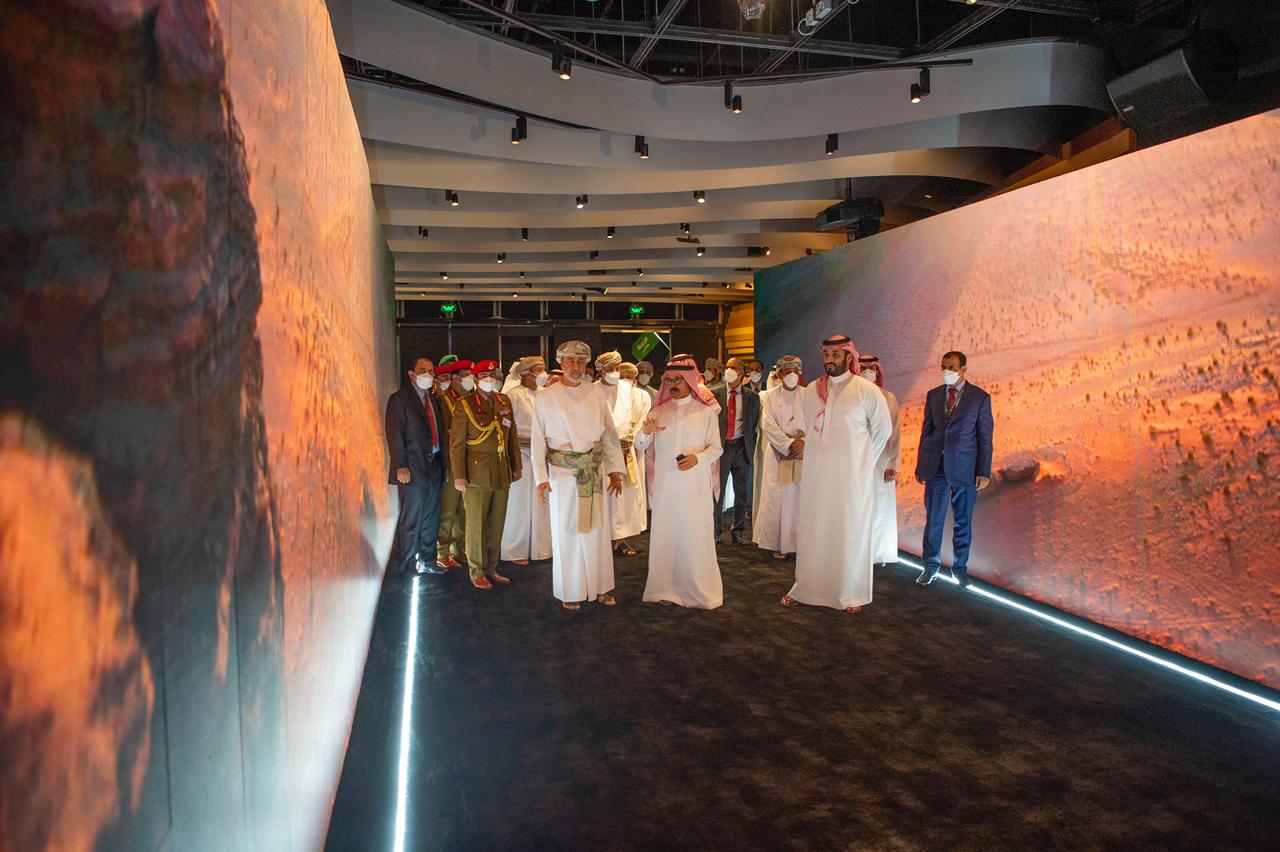
Sultan Haitham bin Tariq tours NEOM Center for Knowledge Enrichment, accompanied by Crown Prince Mohammed bin Salman. (SPA)
Saudi Foreign Minister Prince Faisal said Sultan Haitham’s visit to the Kingdom was of great importance as it was his first official visit.
He added that the historical bilateral relations have been and still are based on mutual respect, serving common interests, constructive cooperation in addressing Arab and Islamic issues, and dealing with regional and international issues in order to achieve international peace and security.
He highlighted the level of growth in economic and trade relations between the two countries, saying that the volume of trade exchange amounted to about SR10.6 billion ($2.8 billion) in 2019, compared to SR9.37 billion in 2018.
Minister of Investment Khalid Al-Falih said the number of Saudi investors companies, institutions and individuals investing in Oman had reached 1,235, and the number of Omani companies in the Kingdom reached 320 by the end of the second quarter of the year.
He added that Saudi investments in the sultanate amounted to nearly SR24 billion, and that there are a number of leading and promising Saudi companies interested in investing in various vital sectors in Oman, including petrochemicals, health care, renewable energy, business services, food, transport and storage, urban development and others.
He said the integration between the Kingdom’s Vision 2030 and Oman’s Vision 2040 will create several promising investment opportunities in a number of sectors.
Saudi Arabia’s Minister of State for Foreign Affairs Adel Al-Jubeir said the visit would raise the level of coordination and partnership in various fields and strengthen bilateral and joint economic cooperation.
Opinion
This section contains relevant reference points, placed in (Opinion field)
On Prince Mohammed bin Salman’s Middle East Green Initiative that was announced in March, Al-Jubeir said: “Sultan Haitham bin Tariq expressed Oman’s support for all the efforts made by the Kingdom in this regard, which came during his discussion with the crown prince on the environmental challenges facing the region and their economic, social and health impacts.”
Al-Jubeir also said that the Kingdom and Oman worked successfully to address the coronavirus pandemic through joint work, cooperation and coordination via the GCC’s Health Council, and this had a great impact in controlling the spread of the virus and limiting its repercussions.
GCC secretary-general Nayef Al-Hajraf, said the visit is an embodiment of the historical and solid ties that bind the two countries, and comes to enhance the common hopes and aspirations of the two peoples.
He said the visit “reflects the exceptional relations between them.”
He said the visit would consolidate the depth of the deep-rooted relations between the two countries.








